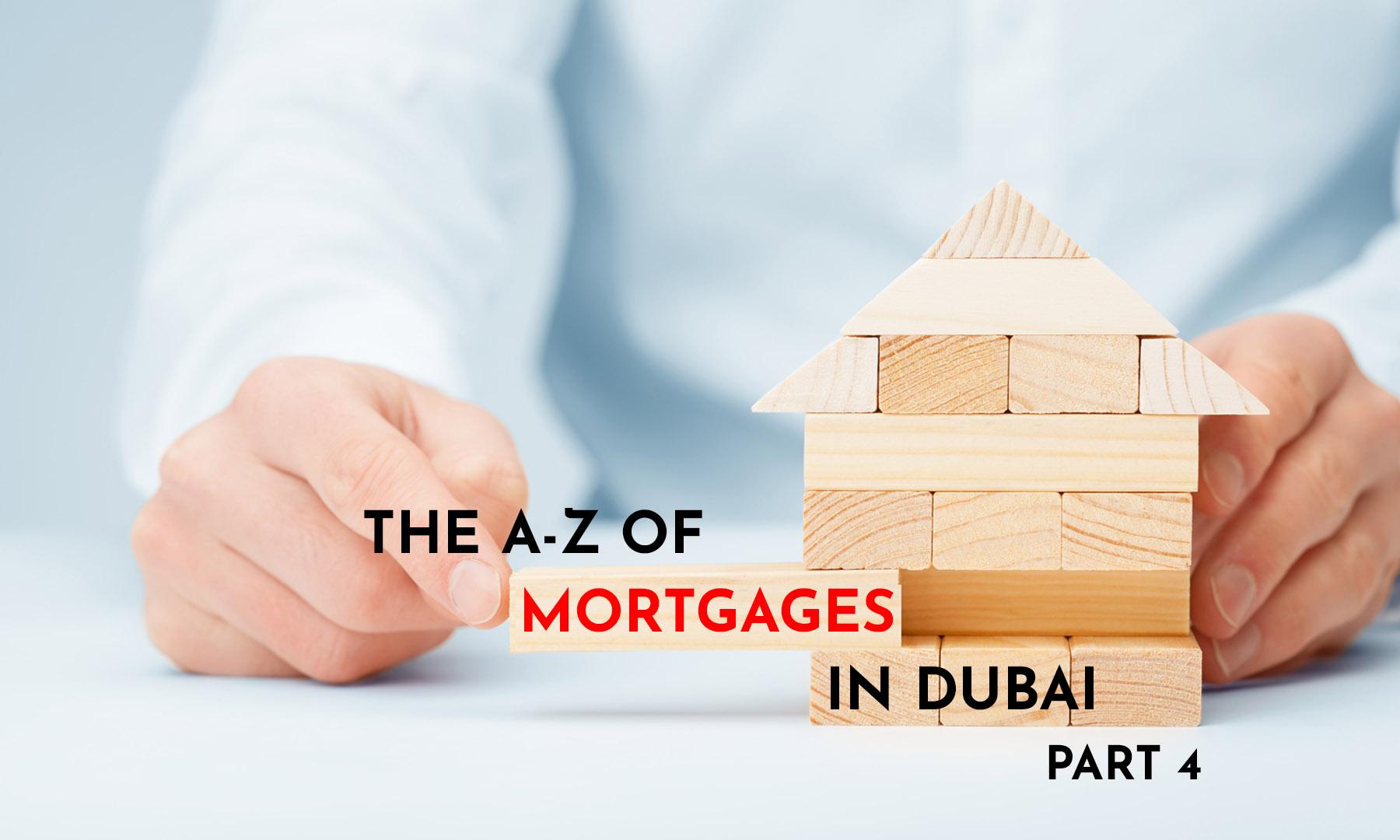THE A-Z OF MORTGAGES IN DUBAI – Part 4

As we stand on the threshold of completing our enlightening journey through the world of mortgages, it’s essential to reflect on the importance of understanding this domain. Mortgages, for many, represent one of the most significant financial commitments they’ll ever make. It’s a world filled with terms and nuances that can often seem overwhelming.
Yet, as we’ve discovered in our series, with the right guidance and knowledge, this world becomes less intimidating. In this final installment, we’ll tie up any loose ends, ensuring that you walk away with a holistic understanding of mortgages in Dubai.
1. Debt Burden Ratio (DBR)
The DBR is the ratio of your monthly debt payments to your monthly income. The maximum debt allowed you for Dubai mortgages is 50% of your income. This debt is across all debt instruments including personal loans, auto loans, credit cards, mortgages, etc. For example, if your income is AED 30,000, the maximum installment debt you can service is AED 15,000 across all loans.
2. AECB
The Al Etihad Credit Bureau (AECB) is an organization in the United Arab Emirates that collects credit information from various sources about individuals and companies. This information is then used to create credit reports, which banks and other financial institutions use to assess the creditworthiness of individuals and businesses.
In simpler terms, AECB helps lenders decide how risky it is to lend money to a person or company by providing them with a detailed credit history.
3. Equity & Equity Release
Equity-release provides property owners a unique opportunity to release funds against their property. You can use these funds for renovation of the existing property, business investments or personal use. Consider releasing equity from one property and using the funds to invest in another as it’s a great way to build your investment portfolio.
4. Buyout
This mortgage product offers borrowers an opportunity to buyout of a current mortgage and switch a new mortgage. This can be done with the same lender or a new one. Additionally, if you find a more favorable interest rate or better terms, a buyout can potentially leads to considerable savings in the long run.
5. Handover Payment
Individuals who have invested in off-plan properties can rely on the handover payment mortgage when their property reaches completion. This means that the buyers are expected to pay a lump sum of approximately 30 – 70% of the property value. You can avail of the same as soon as you receive the handover notice from the developer, thereby ensuring the final payment is made.
6. Stress Rate
Stress rate is a calculation used internally by banks to reduce the impact of any unforeseen rate in the future. This is not a term you’d see in any offer letter but an internal calculation done for your eligibility. For instance, if a bank offers you an interest rate of 5% fixed for three years, the bank will do an eligibility calculation based on the stress rate, which could be 7%-9%
Parting Thoughts- And so, our comprehensive exploration comes to a close. But remember, the end of this series is just the beginning of your empowered journey in the world of mortgages. With the knowledge you’ve gained, you’re now equipped to approach mortgage discussions and decisions with confidence and clarity.
In the vast ocean of financial decisions, understanding mortgages is like having a reliable compass guiding you towards safe and informed choices. As you move forward, carry this knowledge as your beacon, ensuring you always make decisions that are in your best interest.